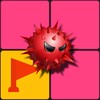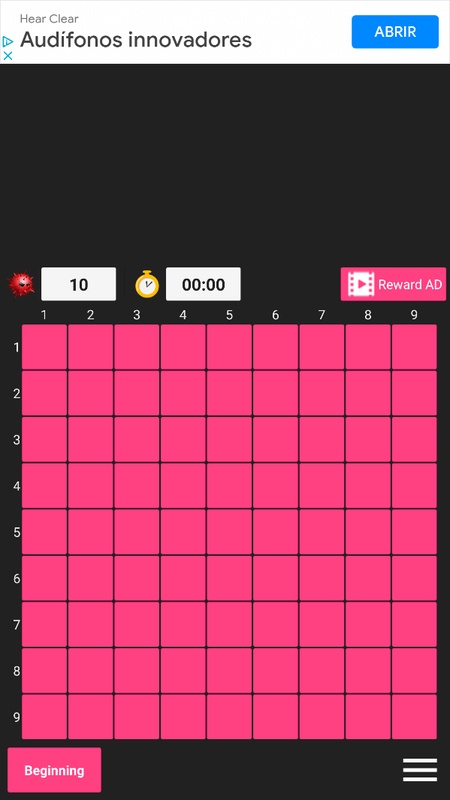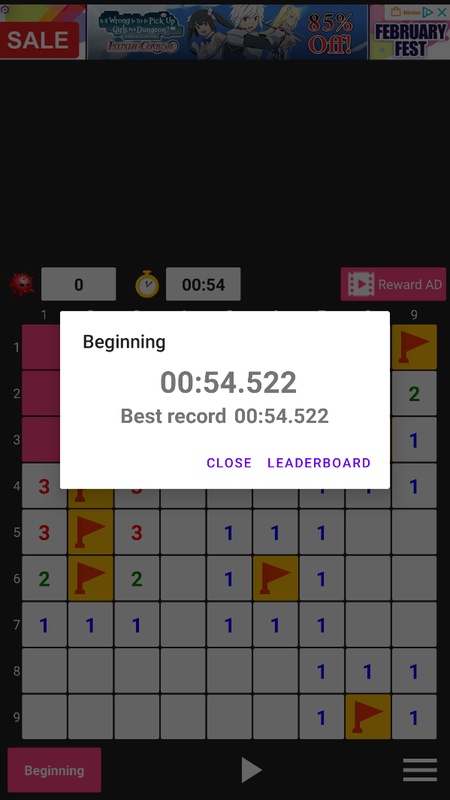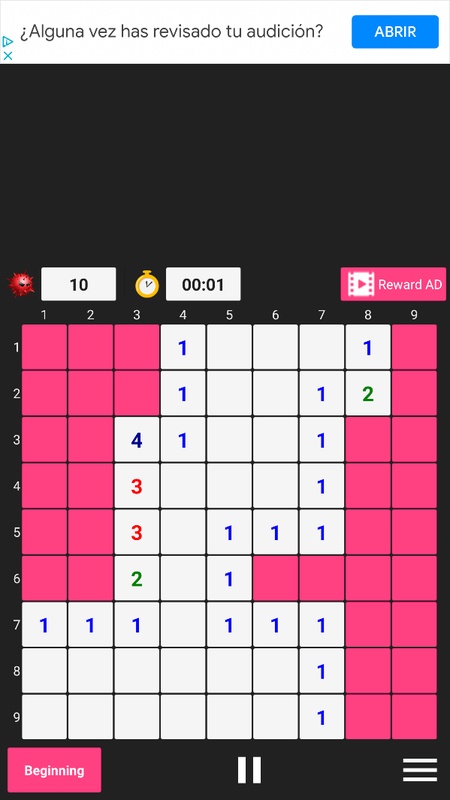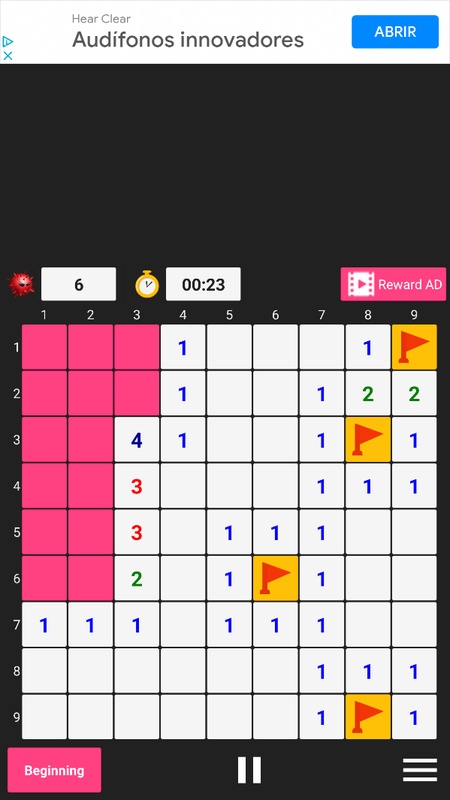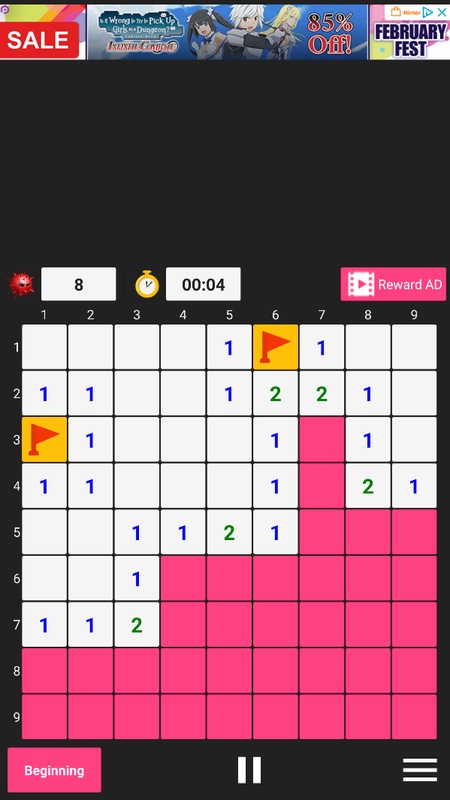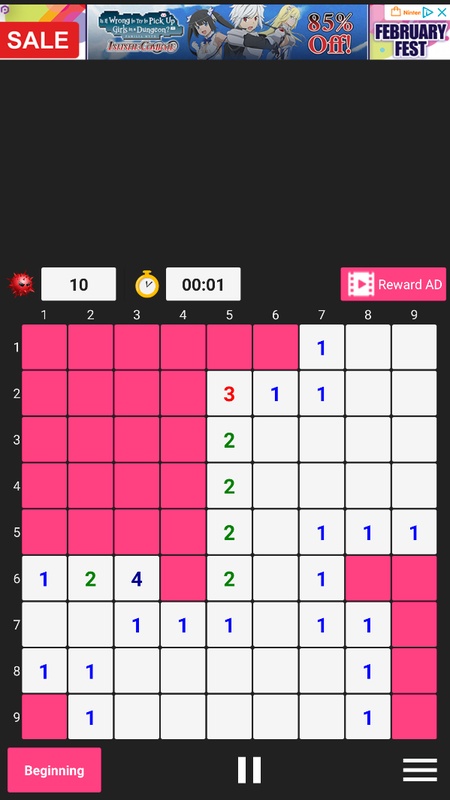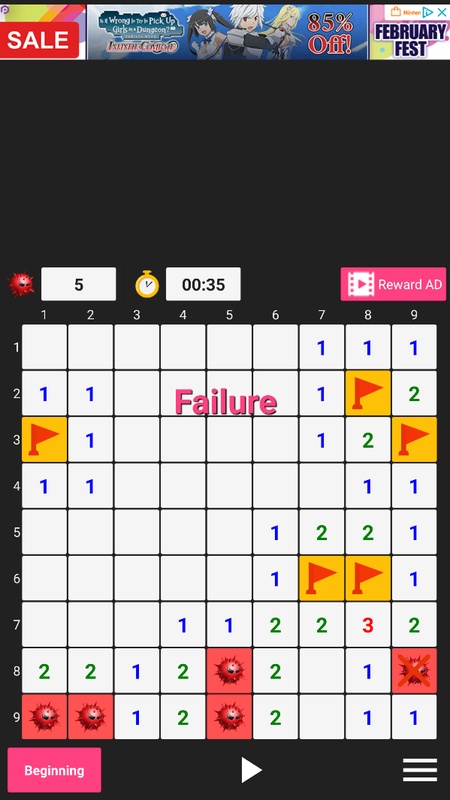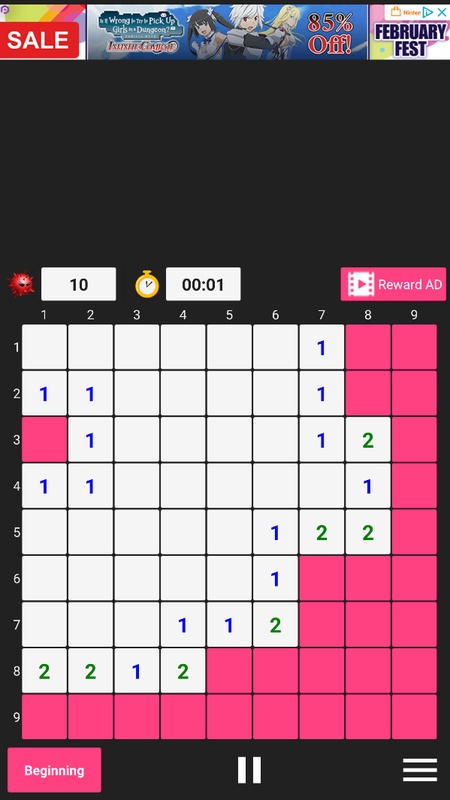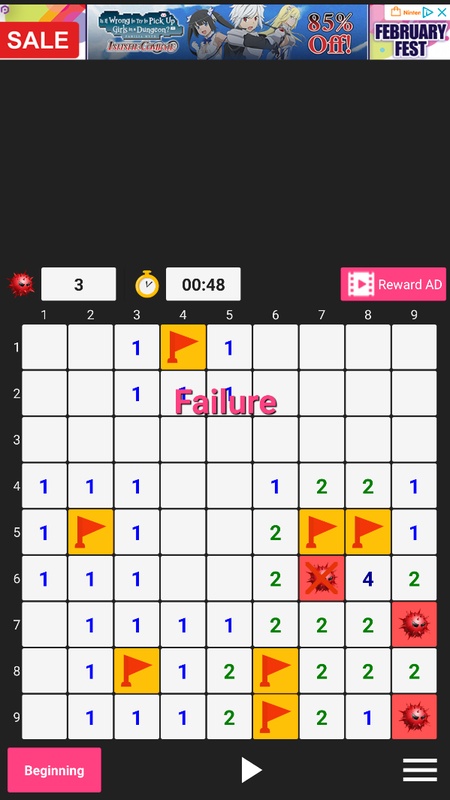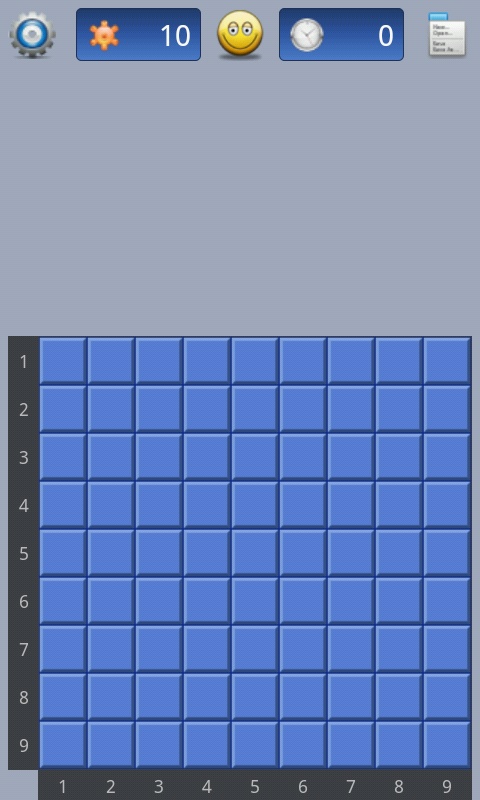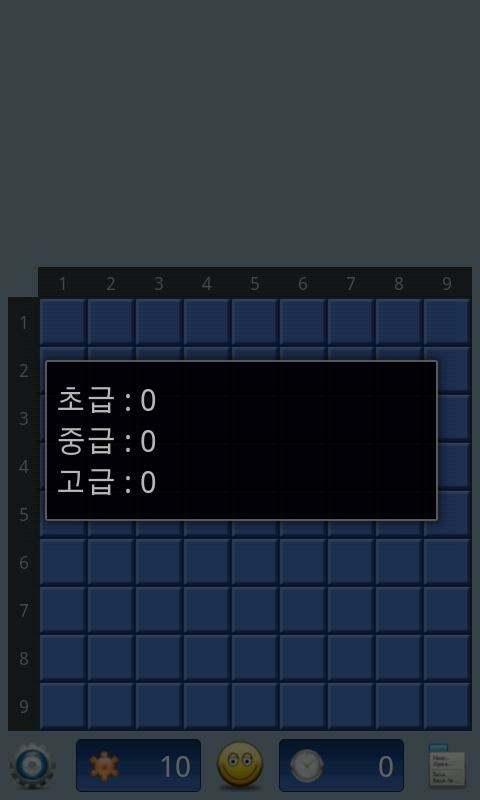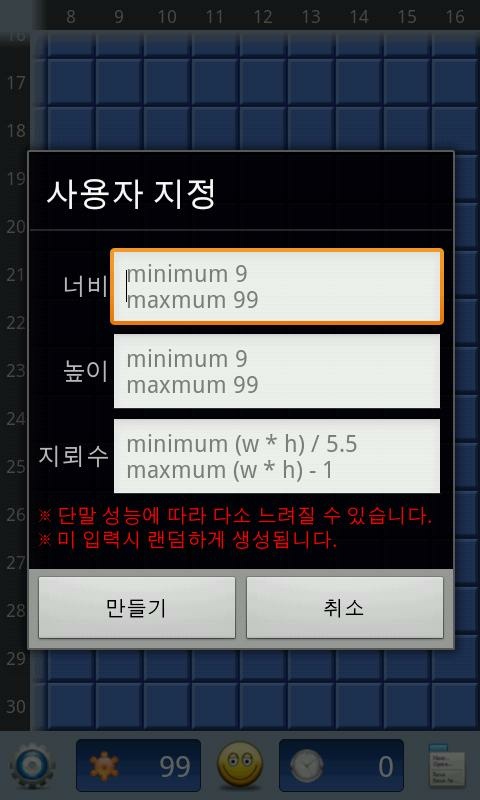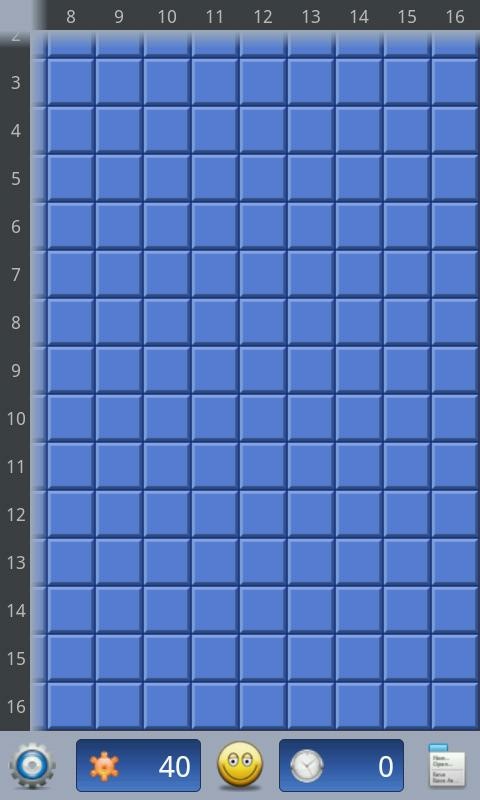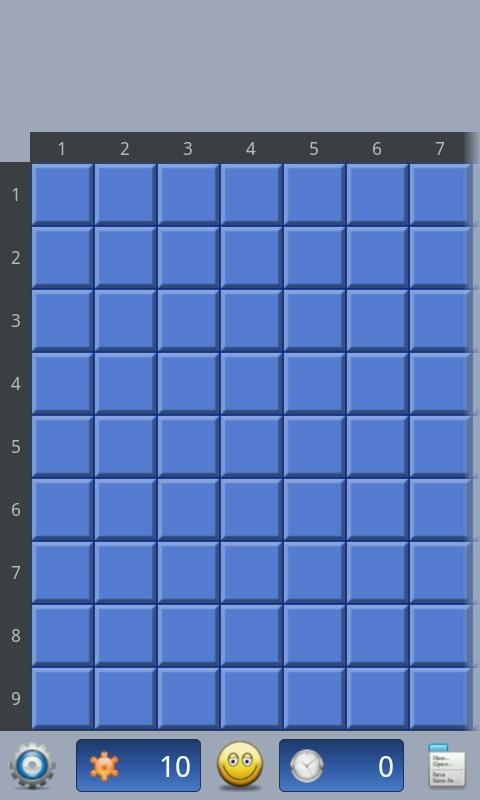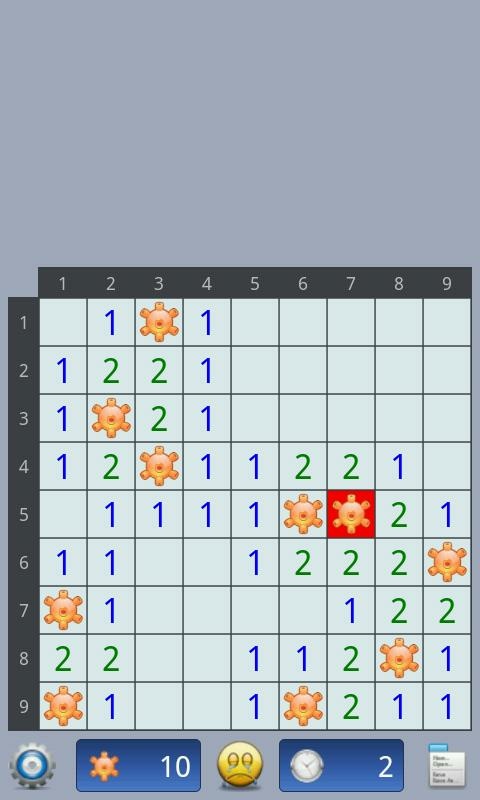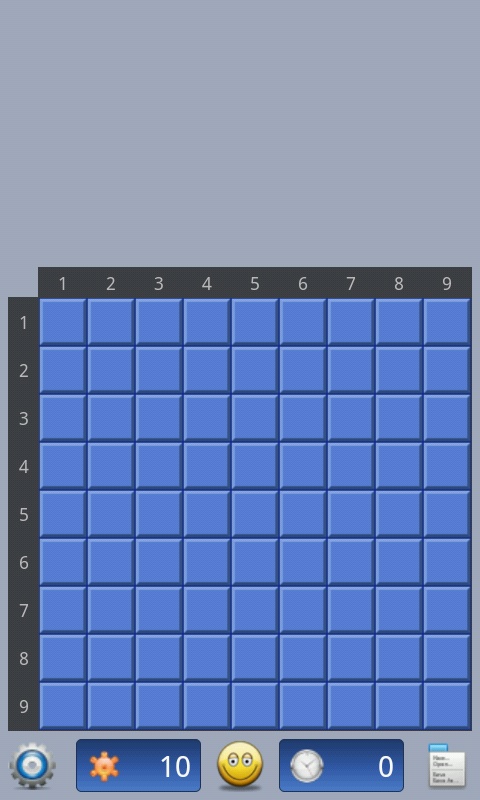Minesweeper is a game for Android where you must mark the location of all the mines on a board.
This game is a classic Windows OS game, but it is now available for Android. You're presented with a board where there may or may not be a mine under each square. You've got to find out where they are and mark them. Playing Minesweeper is simple: just tap a box to find out what is underneath it. There are three options: a number, empty or a mine. If a square is empty, several nearby tiles will disappear until one with a number is found. The numbered squares tell you how many mines are in the squares adjacent to them. If you hit a mine, it's game over.
Minesweeper: A Comprehensive Guide
Minesweeper, a classic puzzle game, challenges players to uncover a hidden grid filled with mines while avoiding their detonation. The game presents a grid of squares, each representing a potential mine location. Players must strategically reveal squares to deduce the presence of mines based on the numbers displayed in adjacent squares.
Gameplay:
1. Revealing Squares: Left-clicking on a square reveals its contents. If the square contains a mine, the game ends. If the square is empty, a number is displayed, indicating the number of mines in the eight surrounding squares.
2. Flagging Mines: Right-clicking on a square places a flag, indicating the player's belief that it contains a mine. Flagging squares is crucial for avoiding detonation.
3. Uncovering Safe Squares: Players must use logical reasoning to deduce which squares are safe to uncover. By comparing the numbers displayed on revealed squares, they can eliminate possible mine locations and uncover safe squares.
4. Winning the Game: The player wins by successfully revealing all non-mine squares without detonating any mines.
Strategy:
1. Scan for Patterns: Look for patterns in the numbers displayed on revealed squares. This can help identify potential mine locations and safe areas.
2. Isolate Mines: When a square with a number is revealed, try to isolate the mine(s) by flagging squares around it that could potentially contain mines.
3. Guessing: In some situations, guessing is necessary. However, make informed guesses based on the available information.
4. Trial and Error: Sometimes, trial and error is unavoidable. Carefully uncover squares that you believe are safe, while being prepared for the possibility of detonating a mine.
Tips:
* Start by uncovering squares in the corners or edges of the grid, as these typically have fewer adjacent squares.
* Avoid clicking squares adjacent to numbers that are close to the total number of mines in the grid.
* If a square with a "1" is revealed, flag the adjacent square.
* Use flags sparingly. Incorrectly flagged squares can make the game more difficult.
* Pay attention to the size of the grid and the number of mines to adjust your strategy accordingly.
Minesweeper is a game for Android where you must mark the location of all the mines on a board.
This game is a classic Windows OS game, but it is now available for Android. You're presented with a board where there may or may not be a mine under each square. You've got to find out where they are and mark them. Playing Minesweeper is simple: just tap a box to find out what is underneath it. There are three options: a number, empty or a mine. If a square is empty, several nearby tiles will disappear until one with a number is found. The numbered squares tell you how many mines are in the squares adjacent to them. If you hit a mine, it's game over.
Minesweeper: A Comprehensive Guide
Minesweeper, a classic puzzle game, challenges players to uncover a hidden grid filled with mines while avoiding their detonation. The game presents a grid of squares, each representing a potential mine location. Players must strategically reveal squares to deduce the presence of mines based on the numbers displayed in adjacent squares.
Gameplay:
1. Revealing Squares: Left-clicking on a square reveals its contents. If the square contains a mine, the game ends. If the square is empty, a number is displayed, indicating the number of mines in the eight surrounding squares.
2. Flagging Mines: Right-clicking on a square places a flag, indicating the player's belief that it contains a mine. Flagging squares is crucial for avoiding detonation.
3. Uncovering Safe Squares: Players must use logical reasoning to deduce which squares are safe to uncover. By comparing the numbers displayed on revealed squares, they can eliminate possible mine locations and uncover safe squares.
4. Winning the Game: The player wins by successfully revealing all non-mine squares without detonating any mines.
Strategy:
1. Scan for Patterns: Look for patterns in the numbers displayed on revealed squares. This can help identify potential mine locations and safe areas.
2. Isolate Mines: When a square with a number is revealed, try to isolate the mine(s) by flagging squares around it that could potentially contain mines.
3. Guessing: In some situations, guessing is necessary. However, make informed guesses based on the available information.
4. Trial and Error: Sometimes, trial and error is unavoidable. Carefully uncover squares that you believe are safe, while being prepared for the possibility of detonating a mine.
Tips:
* Start by uncovering squares in the corners or edges of the grid, as these typically have fewer adjacent squares.
* Avoid clicking squares adjacent to numbers that are close to the total number of mines in the grid.
* If a square with a "1" is revealed, flag the adjacent square.
* Use flags sparingly. Incorrectly flagged squares can make the game more difficult.
* Pay attention to the size of the grid and the number of mines to adjust your strategy accordingly.

